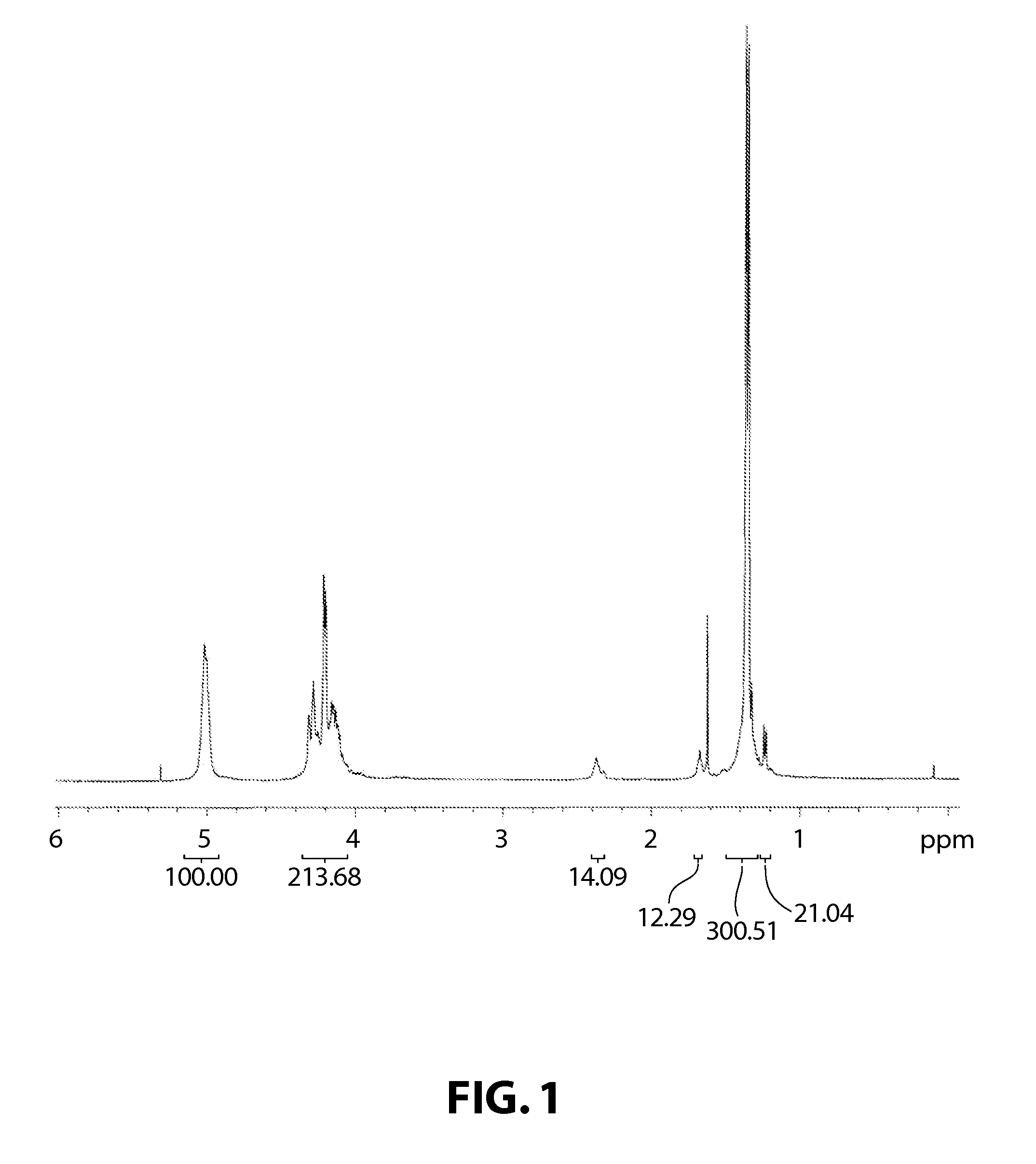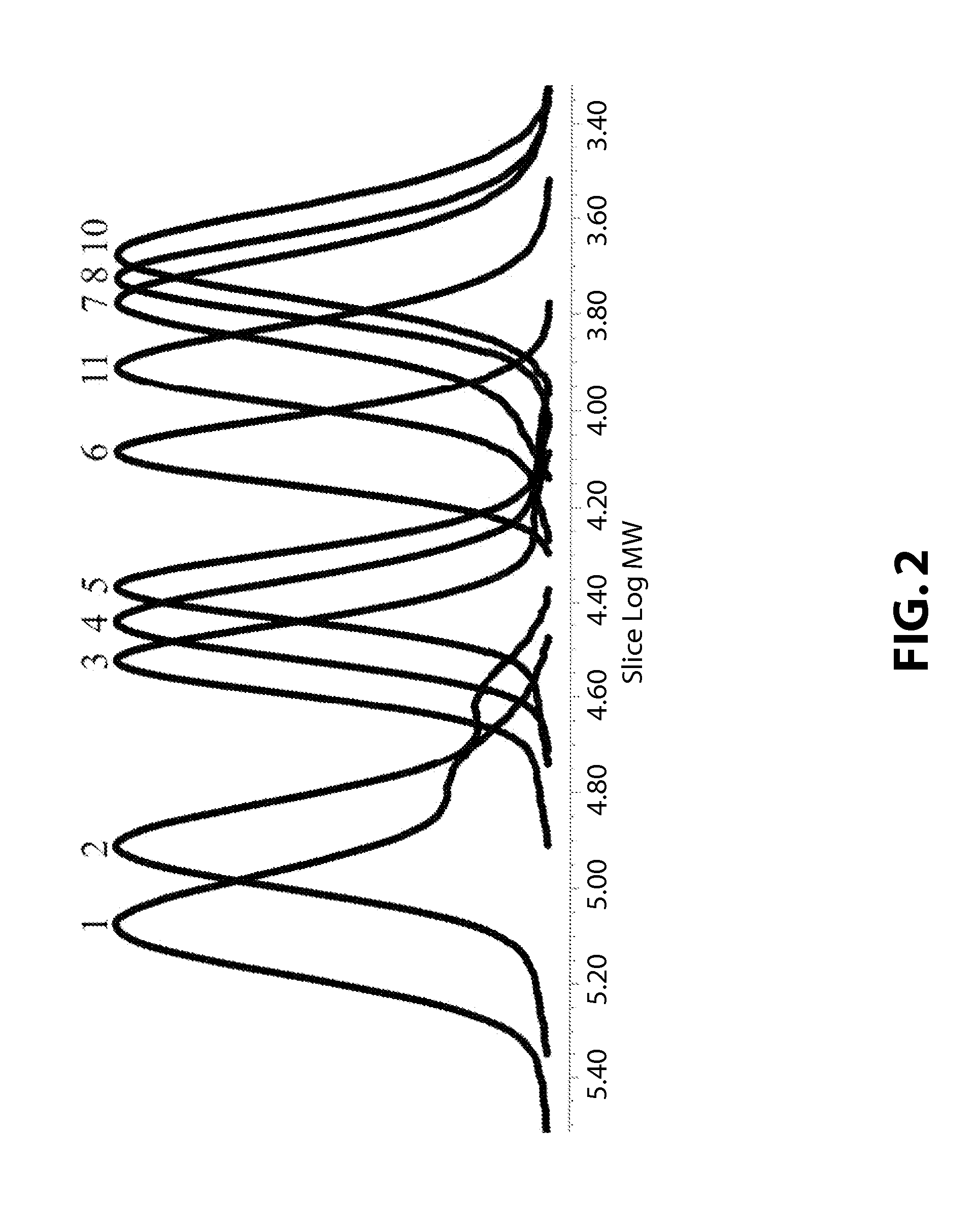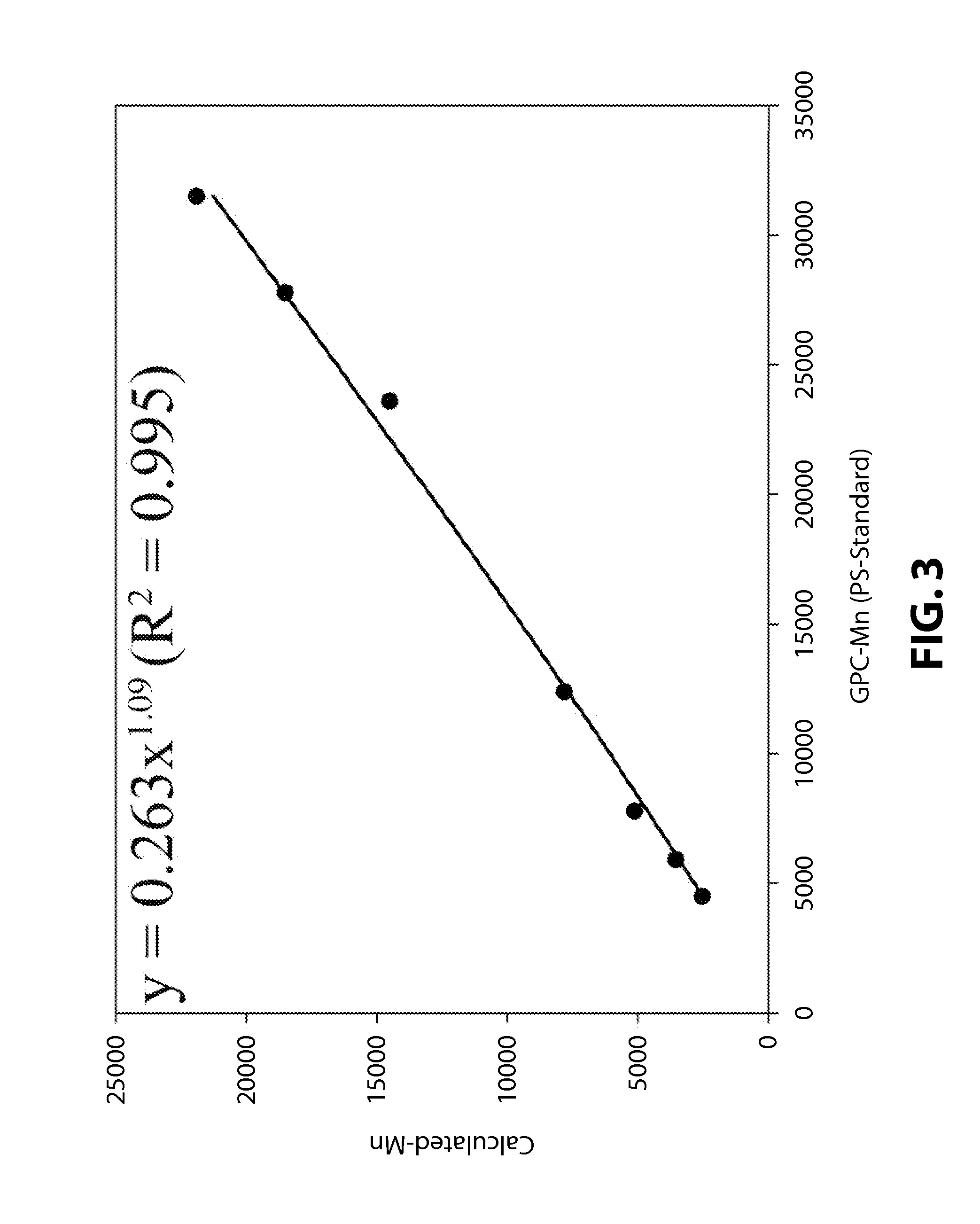Precise Control of Molecular Weight and Chain Shape Control in Carbon Dioxide/Epoxide Alternating Copolymerization and Preparation of Low Molecular Weight Poly(alkylene Carbonate) Thereby
a technology of carbon dioxide and epoxide, which is applied in the direction of organic-compound/hydride/coordination-complex catalyst, physical/chemical process catalyst, chemical apparatus and processes, etc., can solve the problems of insufficient mechanical strength, inability to prepare polyol, and predetermined limitations on the application that can be developed
- Summary
- Abstract
- Description
- Claims
- Application Information
AI Technical Summary
Benefits of technology
Problems solved by technology
Method used
Image
Examples
example 1
Carbon Dioxide / Propylene Oxide Copolymerization Using Adipic Acid as Chain Transfer Agent and Catalyst Separation
[0099]Copolymerization
[0100]The compound C (3.0 mg, monomer / catalyst=100,000) obtained in Preparative Example 1 and propylene oxide (10.0 g, 172 mmol) were added into a 50 mL bomb reactor, and adipic acid was added in an amount of 10, 25, 50, 75, 100, 200, 300, 400, 500 times the mol of the catalyst as shown in Table 1 below, after which the reactor was assembled. A carbon dioxide gas pressure of 15 bar was applied to the reactor, and the reactor was then dipped in an oil bath at 73° C., followed by performing stirring. After 35 min, the internal temperature of the reactor reached 70° C. From that point in time, the pressure of the reactor was observed to decrease. The polymerization was carried out for 1 hour (Entry Nos. 1˜9), 30 min (Entry No. 10) or 2 hours (Entry No. 11) from the point in time at which the internal temperature of the reactor reached 70° C. and the rea...
example 2
Carbon Dioxide / Propylene Oxide Copolymerization Using Ethanol as Chain Transfer Agent and Catalyst Separation
[0106]The polymerization reaction was carried out in the same manner as in Example 1, with the exception that ethanol (which is a compound of Formula 5 in which c is 1, LH is OH and J is ethyl) was used as a chain transfer agent, instead of adipic acid, and added in an amount 600 times or 1000 times the mol number of the catalyst, after which the catalyst was separated in the same manner. When the chain transfer agent was added 600 times, 2.98 g of a pure polymer was obtained, and this polymer had a TON of 16200, a molecular weight (Mn) of 4500 as measured by GPC using the PS standard, and a molecular weight distribution (Mw / Mn) of 1.05. When the chain transfer agent was added 1000 times, 1.56 g of a pure polymer was obtained, and this polymer had a TON of 8500, a molecular weight (Mn) of 1700 as measured by GPC using the PS standard, and a molecular weight distribution (Mw / M...
example 3
Carbon Dioxide / Propylene Oxide Copolymerization Using Hexanoic Acid as Chain Transfer Agent and Catalyst Separation
[0107]The polymerization reaction was carried out in the same manner as in Example 1, with the exception that hexanoic acid (which is a compound of Formula 5 in which c is 1, LH is COOH and J is pentyl) was used as a chain transfer agent, instead of adipic acid, and added in an amount 600 times the mol number of the catalyst, after which the catalyst was separated in the same manner. 2.40 g of a pure polymer was obtained, and this polymer had a TON of 13300, a molecular weight (Mn) of 3800 as measured by GPC using the PS standard, and a molecular weight distribution (Mw / Mn) of 1.06. 1H NMR analysis showed that the sample was a complete alternating copolymer.
PUM
| Property | Measurement | Unit |
|---|---|---|
| glass transition temperature | aaaaa | aaaaa |
| molecular weight | aaaaa | aaaaa |
| molecular-weight | aaaaa | aaaaa |
Abstract
Description
Claims
Application Information
 Login to View More
Login to View More - R&D
- Intellectual Property
- Life Sciences
- Materials
- Tech Scout
- Unparalleled Data Quality
- Higher Quality Content
- 60% Fewer Hallucinations
Browse by: Latest US Patents, China's latest patents, Technical Efficacy Thesaurus, Application Domain, Technology Topic, Popular Technical Reports.
© 2025 PatSnap. All rights reserved.Legal|Privacy policy|Modern Slavery Act Transparency Statement|Sitemap|About US| Contact US: help@patsnap.com



